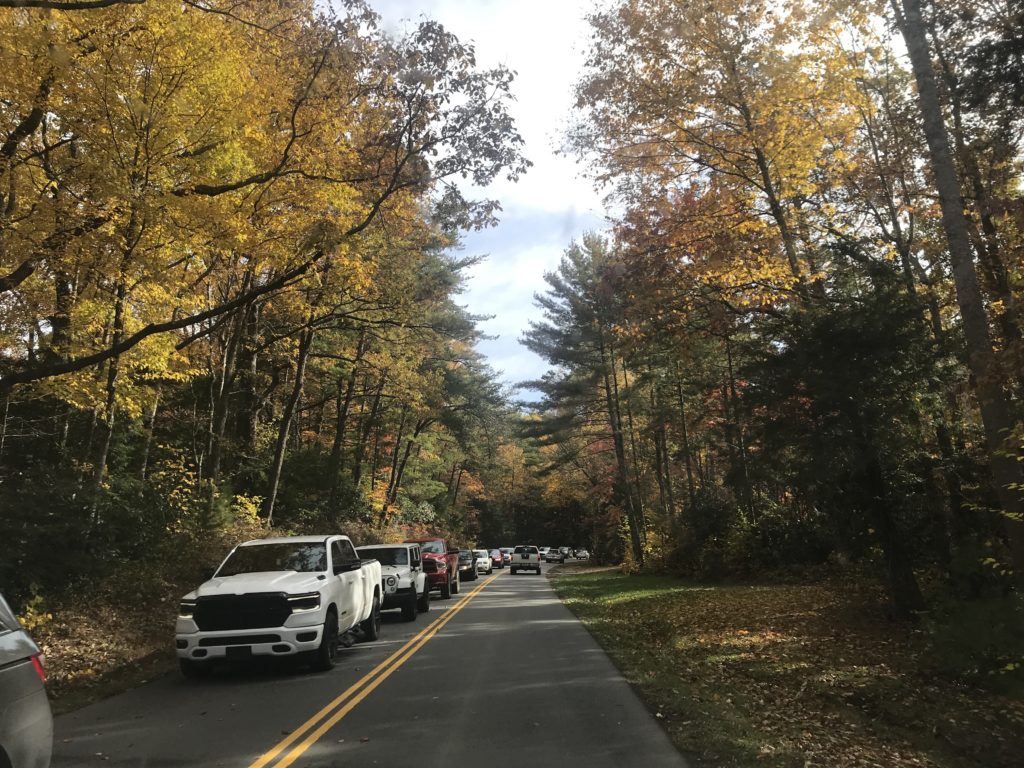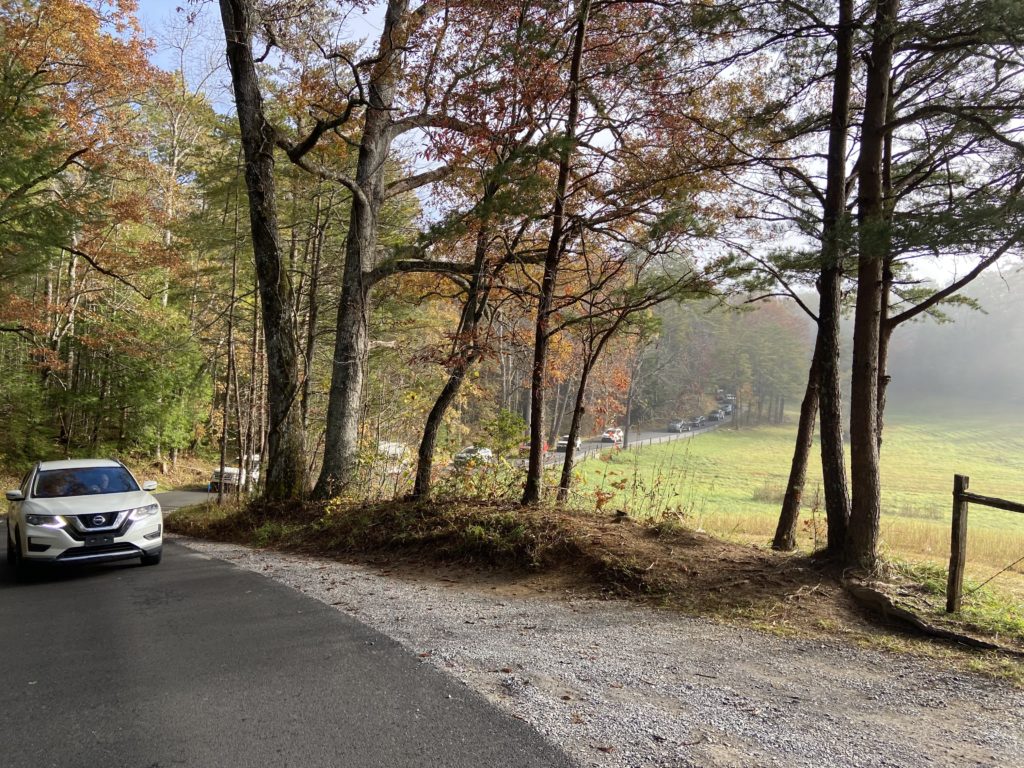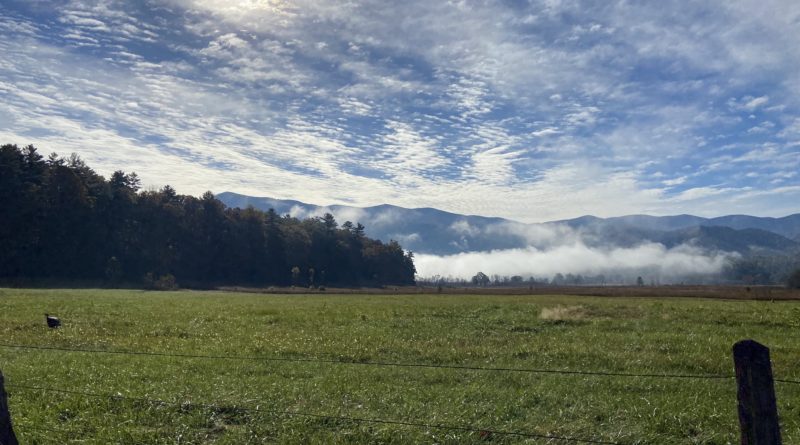Tourism in national parks is increasing, and it may affect your next experience in the Smokies
Growing up in East Tennessee meant that day trips to Cades Cove with my family were (and still are) a regular occurrence. The Great Smoky Mountains National Park is always a go-to place for picnics, swimming in the river, hikes and for when I just need to get away for a while and enjoy the peace and quiet of the park.
Black bears are one of the biggest attractions to Cades Cove. While deer, turkey and horses are almost guaranteed to make an appearance, bears can be more elusive and less commonly spotted, which makes it all the more exciting to have an encounter with one. I, like most visitors, always hope to see bears during a trip through the loop, and in the past, it was a regular occurrence to see a mother and cubs in a tree or a few young males scrounging for food in the open pastures. It was rare for me to leave the Cove without having spotted at least one.
My most recent trip to Cades Cove, however, was different. I went during the peak week for fall color, hoping to experience the colorful foliage before the temperature and leaves began dropping. I was not the only one with this idea; a line of cars as far as I could see followed me into the already busy park.

Photo by Emma Henson.
I knew well enough to expect a crowd. Tourism in the national parks has increased since the beginning of the COVID-19 pandemic, due to the increased demand for outdoor activities that allow for social distancing. CNBC reported that some parks experienced record numbers of visitors in 2021. The Great Smoky Mountains National Park is the most visited national park, with 12 million visitors annually, according to the National Park Service. NPS also reported a 32% increase in visitors over the last decade.
What I did not expect was how the increase in tourism would affect the overall experience of visiting the park. Twice during my trip through Cades Cove did I encounter a park ranger directing traffic away from the scene of a bear spotting. Usually when there is a bear sighting traffic slows for a while as people pull over or attempt to take photos as they pass.

Photo by Emma Henson.
The first scene I encountered that day, however, was abuzz with people in a way I had rarely experienced. Every parking spot in the pull-off was taken. The park ranger had blocked off an opening in the scrub with cones to prevent the large crowd that was quickly accumulating from approaching the mother bear and cub in the nearby brush.
The next ranger that I happened upon was preventing traffic from entering a side road, near which a bear had wandered. The influx of cars hoping to glimpse the bear had made the road so congested that a traffic jam was formed.
Despite the fact that this increase in tourism means a more bustling national park and perhaps a slightly less relaxing trip through the mountains, greater problems are arising from it than simply causing an inconvenience to visitors’ road trips; the wildlife in the parks are being impacted as well.
“Wildlife tourism can cause significant disturbances to animals in their natural habitats. This may frighten animals, especially at sensitive times of their life cycle, and have an adverse effect on breeding. Feeding of wildlife by tourists can change social behavior patterns,” said the International Organization of Supreme Audit Institutions Working Group on Environmental Auditing.

Photo by Emma Henson.
The fact the GSMNP is one of the few national parks without an entrance fee means that the upshot in tourism and negative tourist behavior is being exacerbated there. Behaviors such as approaching wildlife and feeding animals seem to be escalating as the number of park visitors increase, despite signs posted throughout the park asking visitors to refrain from feeding wildlife and warning them to remain the legal distance of 50 yards or more from bear.
That’s right—approaching bears isn’t just dangerous and harmful to the animals – it’s illegal. Yet sightseers will still attempt to get as close to bruins as they can, whether to get the best photo op or just for the thrill of it. What they may not be considering while they snap a photo of cubs tearing into a rotten log to reach the ants inside is how largely this action can impact the future of bears and other animals in the national park habitat.
I say none of this to discourage trips to the Smokies to admire nature and wildlife. Supporting national parks like the Great Smoky Mountains National Park is a fantastic use of time, and the tourism it attracts is what allows us to continue to enjoy it for free. Visitors simply need to practice respectful and safe habits when spending time in the park. Always remember to clean up after yourself, and don’t leave food and trash lying around. Keep a safe distance from wildlife you encounter, and never try to hand feed wild animals. Treat the wildlife, and your fellow visitors, with courtesy. For more information on policies and regulations within parks, check the National Park Service website at www.nps.gov before your next visit.

